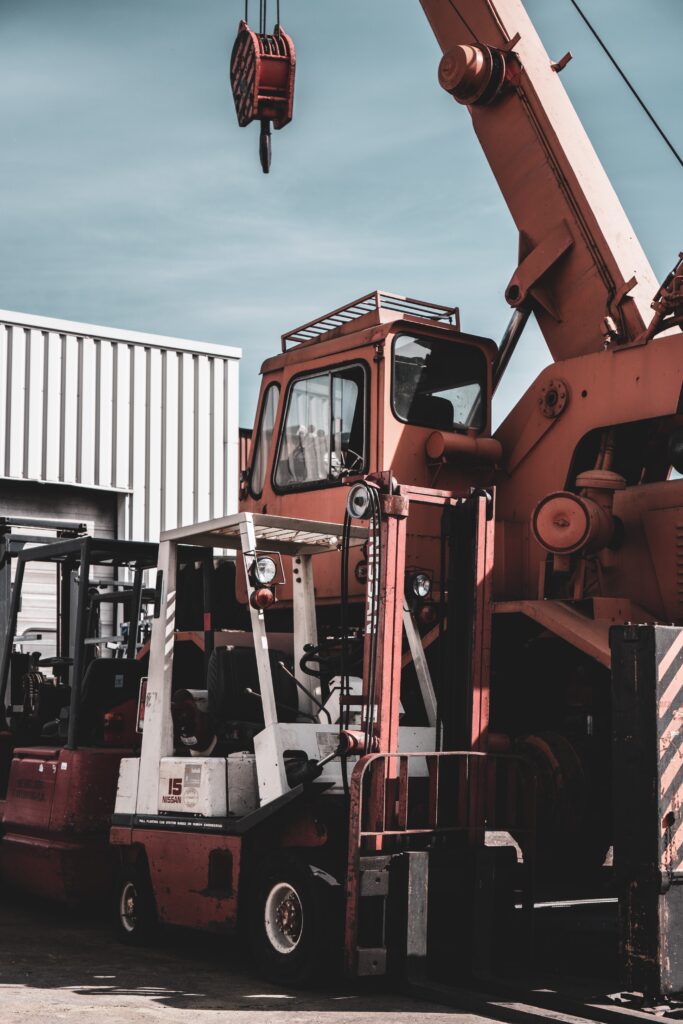When it comes to the world of material handling equipment, two machines stand out: forklifts and telehandlers. At first glance, these machines might appear similar, with their sturdy frames and lifting capabilities. However, upon closer examination, it becomes evident that the two have crucial differences.
Telehandlers at https://www.mascus.co.uk/construction/telescopic-handlers/jcb offer distinct advantages over forklifts in terms of versatility and adaptability. With their telescopic booms, extended reach, and four-wheel steering, telehandlers can handle various tasks and environments, including rough terrains and outdoor applications.

Understanding the distinctions is essential for anyone involved in material handling operations. This article will delve into the dissimilarities between forklifts and telehandlers, shedding light on their unique functions, designs, and applications.
So, let’s start
Forklifts:
Forklifts are indispensable workhorses in material handling operations. These versatile machines are specifically designed to lift, transport, and stack heavy loads in warehouses, distribution centers, and industrial settings. Equipped with hydraulic forks attached to the front, forklifts excel at maneuvering pallets and goods, making them a staple in the logistics industry.
Design and Features:
Forklifts are typically characterized by compact size and rear-wheel steering, allowing excellent maneuverability in tight spaces. The front end of a forklift is equipped with hydraulic forks that can be raised and lowered, enabling operators to lift loads of varying sizes. Forklifts come in various sizes and configurations, with different lifting capacities and mast types, such as standing upright or telescopic masts for increased lifting height.
Use:
- Efficient movement and stacking of loads in warehouses and distribution centers.
- Loading and unloading trucks.
- Transporting goods within the facility.
- Stacking pallets on racks.
- Material handling in manufacturing plants.
- Moving materials along production lines.
- Positioning heavy components during assembly processes.
Telehandlers:
Telehandlers, telescopic handlers, or boom lifts are versatile machines designed for lifting, extending, and reaching loads. They are commonly utilized in construction sites, agriculture, and landscaping industries, where the ability to access elevated areas or handle loads at a distance is crucial.
Design and Features:
Telehandlers feature a telescopic boom that extends vertically and horizontally, providing enhanced reach and lifting capabilities. The boom has hydraulic controls, allowing operators to maneuver loads precisely. Telehandlers typically have four-wheel steering, enabling them to navigate various terrains and tight spaces easily.
Use:
- Lifting and positioning construction materials on construction sites.
- Transporting loads to elevated areas or hard-to-reach locations.
- Assisting in roofing, framing, and installation of building components.
- Loading and unloading heavy farm equipment and bales of hay in agricultural settings.
- Reaching high storage areas in barns or agricultural facilities.
- Tree trimming and maintenance in landscaping projects.
- Placing and arranging heavy landscape elements.
Key Differences Between Telehandlers and Forklifts:
When comparing forklifts and telehandlers, several key differences set them apart.
Let’s explore these distinctions in more detail:
Design and Structure:
Forklifts have a compact design with rear-wheel steering, making them highly maneuverable in tight spaces, particularly indoors. Telehandlers, on the other hand, feature a telescopic boom and four-wheel steering, enabling them to navigate rough terrains and outdoor environments more effectively.
Lifting and Reaching Capabilities:
Forklifts are designed primarily for vertical lifting and stacking of loads. They excel at handling palletized goods and performing tasks at ground level or on low- to mid-level racks. With their telescopic booms, telehandlers offer extended reach capabilities, allowing them to access elevated areas, reach over obstacles, and perform tasks at higher heights.
Maneuverability and Steering:
Forklifts are optimized for maneuvering in indoor environments with smooth surfaces. They have tight-turning radii and excel in confined spaces. With their four-wheel steering, telehandlers offer increased maneuverability on various terrains, including rough or uneven surfaces.
Typical Applications and Environments:
Forklifts find extensive use in indoor settings such as warehouses, distribution centers, and manufacturing facilities, where efficient movement, stacking, and loading/unloading of goods are essential. Telehandlers are better suited for outdoor environments, including construction sites, agriculture, and landscaping, requiring extended reach, rough terrain navigation, and elevated access.
Conclusion:
In conclusion, while forklifts excel in indoor environments with their efficient movement and stacking capabilities, telehandlers offer extended reach and rough terrain maneuverability, making them ideal for outdoor applications. Choosing the right equipment ensures optimal material handling efficiency in specific settings.

